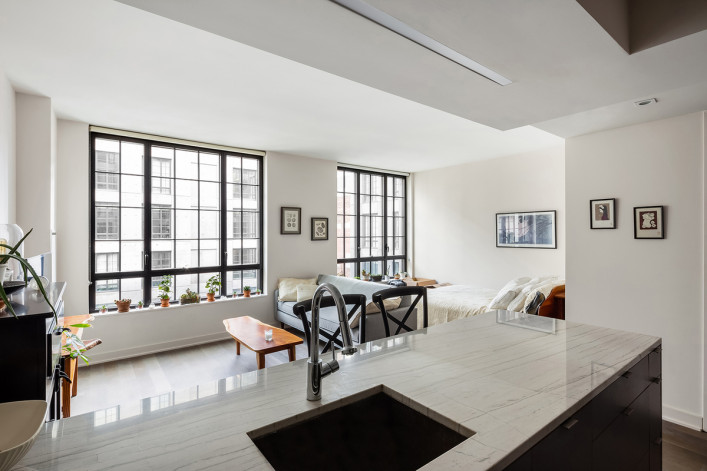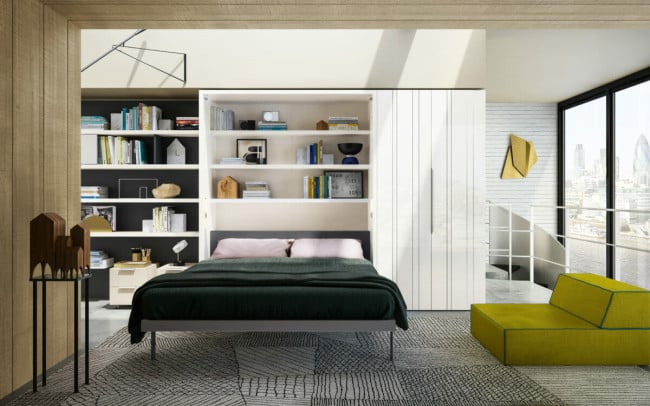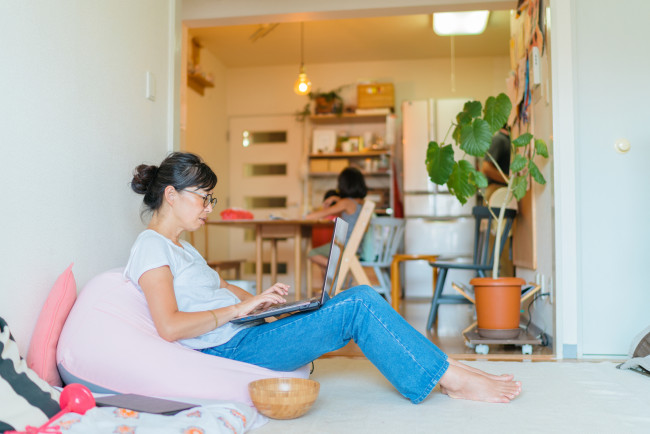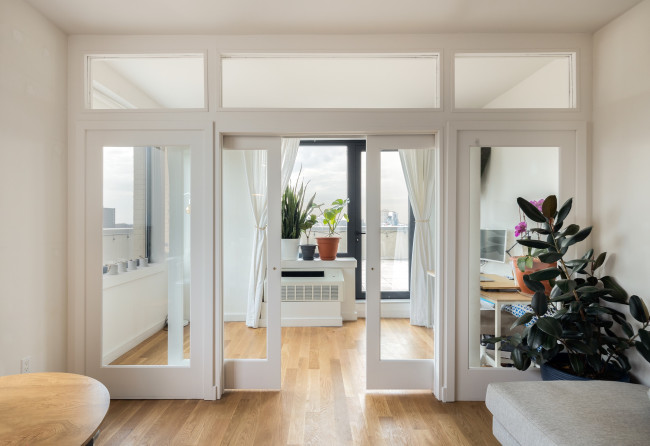Considering a NYC studio apartment? Here's how to maximize your layout
Riding out the coronavirus pandemic in a New York apartment is incredibly challenging—especially if you have roommates, and as the weeks dragged into months, you may have found that your relationships frayed. If you're contemplating moving into a studio to get away from your roommates, you'll want to be smart about the type of studio you choose.
Studios make sense economically for many renters—and that's especially true now. But not all studios are alike—alcove studios, especially L-shaped ones, are very versatile, and can be closed off to become a bedroom or office.
If you’re in the market for a studio, it’s worth knowing what kind of layout works most efficiently and how you can best organize it, given the amount of multi-tasking New Yorkers require from living spaces. Your furniture and storage choices will invariably do double duty, especially if eventually, there are two of you.
Alcoves and how to use them
Molly Franklin, a salesperson at Corcoran, used to live in a studio in the Financial District and says an alcove layout has several advantages. You can block off a bedroom area for a sense of separation. You can use a screen, bookshelf wall, or even an acoustic curtain to delineate the space. If the alcove is large enough and has a window, you may be able to create a bedroom with temporary pressurized walls, but you need to follow a few important steps, including getting a permit from the Department of Buildings and having an architect draw up plans.
You can also turn an alcove into an office with temporary pressurized walls. However, Devin Shaffer, lead designer at the online interiors company Decorilla, says it’s better to keep work areas in the open. That’s because he thinks small, closed-off spaces can become claustrophobic and make you unproductive.
Then there’s also the issue of the Zoom call. More clients are requesting Zoom-worthy home offices and that’s less achievable if your desk is in an alcove, he says. Ideally you want an attractive backdrop with some depth and your monitor facing away from the window to reduce glare.
Kitchen layout priorities
Creating zones in your studio can help the space function better.
“A bit of separation makes a world of difference,” Franklin says. Most of her clients prefer galley or alcove kitchens and appreciate having any additional usable wall space, however small.
You can never have enough storage, especially in your kitchen, Shaffer says. He warns buyers against too much open cabinet space which he says can become tiring to look at. Instead, he encourages clients to look for studios with plenty of closet space and then install organizational systems to keep everything tidy.
Multi-tasking furniture
Fold-down desks, ottomans with storage, and stowaway furniture make for a decluttered room, Shaffer says. Floating furniture might look great in a larger space but he says anyone living in a small apartment needs to take advantage of wall space and the perimeter of a studio to "free up paths of travel," which tends to make the place feel more spacious.
As New Yorkers try to incorporate home offices into their apartments, wall-mounted floating desks, ready-made or customized to a space, are gaining popularity among studio dwellers, says Aleksandra Scepanovic, managing director of Ideal Properties Group.
"With the newfound working from home reality, clients are replacing lesser used pieces in their rooms with productivity boosting furniture and storage solutions," Shaffer says.
Trundle beds can also be an efficient design choice. "In a day bed configuration, your couch is the top platform, and the pull out comes out for sleeping," Franklin says. By doubling up the footprint you get the same utility that a loft bed might offer.
George Case, an agent with Warburg Realty says, "lofting your bed is a great option for those unafraid of a climb." He's seen plenty of rentals, mostly for student tenants, that use a lofted bed with an office underneath.
Vertical design
Vertical space is easily forgotten but it's an important aspect of living efficiently in a studio. That might be floor-to-ceiling shelving, double-sided bookshelves, tower lamps with shelving or vertical artwork.
Not everyone loves the Murphy bed but they can be a practical choice in a studio. Shaffer says the logistics of Murphy bed orders can become a nightmare. "Due to their size and mechanics, there have been many cases where city apartments don't accommodate the deliveries, even after a six-to-eight week lead time." He prefers futons and sofa beds which are typically more affordable.
Franklin, however says the Murphy bed can create a "transformative moment," in a studio each night. "In a work from home situation it's a great way to practice managing your day, when the bed is down, you are done answering emails."
If allocating an area specifically for sleeping either isn’t an option or isn’t a priority, Case says daybeds are a great solution. "They can double as a sofa and come in every style imaginable and they are never a bad idea as extra seating," he says.




























